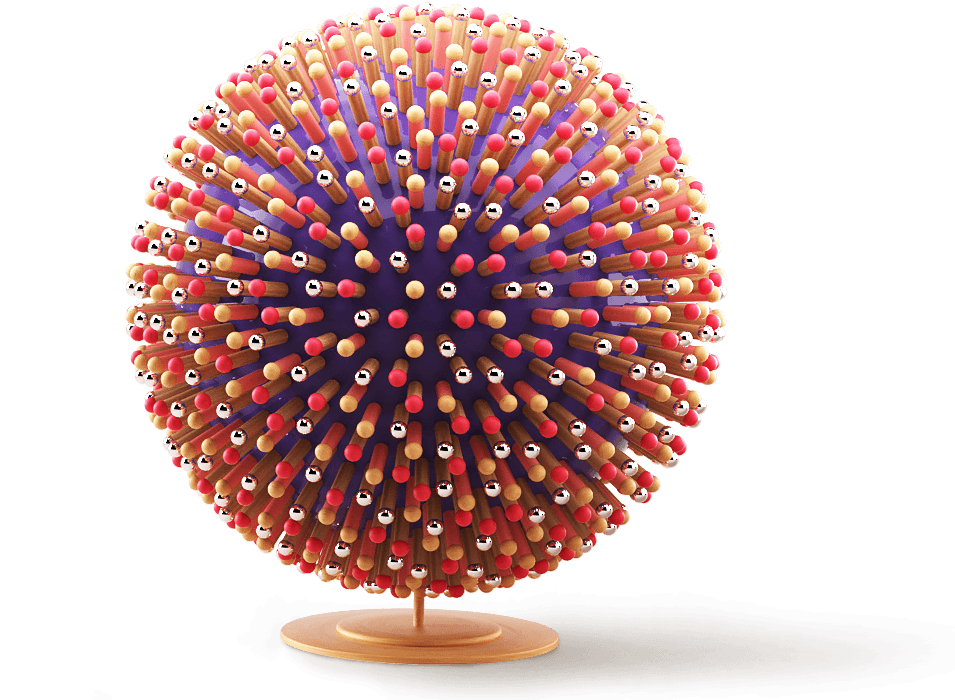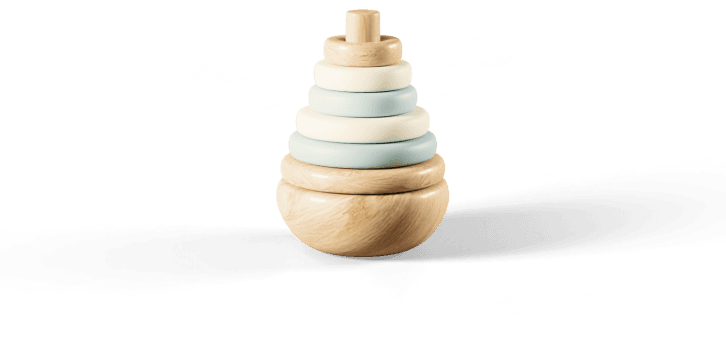Supportive
laboratory methods
The goal of our treatment is a successful pregnancy leading to the birth of a healthy baby. That's why we use state-of-art technologies that increase the chance of conception. At Unica clinics, we offer you a wide range of these support methods. Based on the examination results, our doctors and embryologists will advise you on which of the listed methods is the most suitable.

Sanakin: Autologous Cytokine-Rich Serum (ACRS)
What is Sanakin?
Sanakin presents a groundbreaking alternative to traditional PRP therapy. It also uses the patient's own blood but produces autologous cytokine-rich serum (ACRS), which targets inflammatory processes and stimulates tissue regeneration. This approach is safe and natural, using only substances found in the body to reduce inflammation and promote cell regeneration.
Sanakin is an effective treatment for reproductive issues, thanks to its high levels of anti-inflammatory cytokines and growth factors, which may enhance embryo implantation success. This makes Sanakin a promising alternative to PRP therapy, with its advanced approach to tissue regeneration and reproductive function support.
Functional Sperm Selection (PICSI)
In this technique, we use the fact that the eggshell contains hyaluronan and the heads of mature sperm have a developed receptor for this substance. We use hyaluronan as a magnet to attract mature sperm. Thanks to this method, we can preselect suitable sperm and fertilize the egg with them. Unlike the ICSI method, where we select sperm by shape and motility, PICSI allows us to select mature sperm. This method is thus very similar to selection during natural conception.
Who is PICSI method suitable for?
• patients with borderline spermiogram values
• patients after several unsuccessful cycles
• couples with low fertilization or poor embryo quality
Magnetically Activated Cell Sorting (MACS)
This non-invasive sperm selection method allows us to select live sperm without signs of apoptosis. Apoptosis is the process of programmed cell death. At first, spermatozoa may appear mobile; under a microscope, it is difficult to distinguish them from healthy sperm. However, apoptotic sperm cannot fertilize the egg at a later stage. The MACS method magnetically marks these sperm and captures them using the magnetic field. The remaining sperm passing the method show higher mobility, shape and DNA fragmentation.
Who is the MACS method suitable for?
• Men at an older age due to the probability of having a DNA-damaged sperm
MicroChip Fertile Plus® (Microfluidic sperm sorting chips)
Some assisted reproduction procedures require so-called centrifugation in the preparatory process. It mechanically filters out unsuitable sperm. But at the same time, it means higher stress, which often leads to sperm damage. The microfluidic chip method is a more gentle alternative based on the principle of natural sperm selection. The chip contains micro-barriers that the sperm pass through, which mimic the natural environment of a woman's fallopian tubes. They can be used for fertilization by ICSI, PICSI, IVF, and IUI methods. Sperm sorted in this way show higher mobility and better shape, lower DNA fragmentation and levels of reactive oxygen species, which could negatively affect them.
Who is the MicroChip Fertile Plus® method suitable for?
• for couples after repeated miscarriages
• for couples after repeated embryo transfers, and embryo implantation failures
• for couples with poor embryo quality in previous cycles
Timelapse
This method helps us monitor embryo development throughout its cultivation. We place the embryos in a special Timelapse culture box, where they have the best conditions for growth. We continuously scan them with a microscopic camera and monitor their development. During the entire 5 days of extended cultivation, we evaluate the development dynamics. Subsequently, we can select the best quality embryos with the best chance of pregnancy.
Assisted hatching using a laser
Each egg and later the embryo is located in a protective covering called the zona pellucida. Here it remains until the implantation time in the uterus. Some embryos, however, have a significantly strong shell, which prevents them from successfully nesting. In the assisted hatching technique, we use a laser beam to create a hole in the embryo's protective cover. This way, we ease the contact with the uterus cells and support the implantation and thus a successful pregnancy. Assisted hatching using a non-contact laser is significantly gentler on the embryo than mechanical hatching and, therefore, cannot damage it.
EmbryoGlue®
The medium from Vitrolife, EmbryoGlue®, is a unique tissue glue we use when transferring an embryo to the uterus. It contains a higher concentration of hyaluronan, which is usually found in the fallopian tubes and uterus and creates an environment with increased viscosity. Simply put, the embryo inserted into the uterus on the special EmbryoGlue® medium sticks to the uterine wall and has a better chance of attachment. Clinical results show that the use of the EmbryoGlue® medium increases the frequency of pregnancy in patients by more than 6%. EmbryoGlue® culture medium can be used for embryo transfer of all developmental embryo stages, from two-day-old to blastocyst. It is suitable for fresh and frozen embryos.
Aspiration of sperm from the epididymis (MESA)
If there is no sperm in the man's ejaculate, we choose the epididymal sperm aspiration method (MESA). This microsurgery is performed by a doctor specializing in urology while the patient is under full anaesthesia. The doctor gains access to the epididymis through an external cut on the scrotum, where he retrieves the sperm with a pipette. The cells collected in this way can be used for fertilization using the ICSI method when sperm is injected directly into the egg.
Who is the MESA method suitable for?
• for men with impaired sperm transport between the epididymis and the urethra
• for men after vasectomy
Retrieval of sperm from testicular tissue (TESE)
If there is no sperm in the ejaculate or epididymis, we obtain cells from testicular tissue (TESE). A urologist performs this microsurgery under general anaesthesia. He removes small pieces of testicular tissue through an external cut on the scrotum. From there, the sperm itself is subsequently obtained in the laboratory. The cells obtained in this way can then be used for fertilization by the ICSI method (injection directly into the egg) and the MESA method.
Who is the TESE method suitable for?
• for men with impaired sperm transport between the epididymis and the urethra
for men after vasectomy
ERA (Endometrial Receptivity Analysis)
The endometrial receptivity test determines when the endometrium is in optimal condition for successful embryo implantation. Based on that, we plan a transfer for the time with the highest chance of pregnancy.
Who is the ERA method suitable for?
• couples who repeatedly experience failure to implant an embryo
EndomTRIO (EMMA, ERA, ALICE)
This set of three examinations, EMMA, ERA and ALICE, gives us a comprehensive view of the endometrium state. Thanks to these tests, doctors recommend an appropriate course of treatment and thus increase the chance of a healthy pregnancy.
EMMA (Endometrial Microbiome Metagenomic Analysis)
This test analyzes the microbiological balance of the endometrium. It evaluates the presence of bacteria, including those supporting a successful pregnancy.
ERA (Endometrial Receptivity Analysis)
This examination determines when the endometrium is in optimal condition for successful embryo implantation. Based on that, we plan a transfer for the time with the highest chance of pregnancy.
ALICE (Analysis of Infectious Chronic Endometritis)
This examination is part of the EMMA test and can identify chronic endometrial inflammation and pathogenic bacteria, most often associated with chronic endometritis. It can be one of the causes of embryo implantation disorders or repeated miscarriages.

We’re here for you
Any further questions? Our coordinator will answer all your questions and arrange everything for your upcoming visit to our clinic.


Related treatments
Assisted reproduction
We offer a wide range of methods and procedures to help even infertile couples become parents. Individual solutions and care are a matter of course at Unica.
Holistic fertility
Unica is the only clinic in the Czech Republic that brings a unique combination of top IVF treatment and holistic medicine. Support your conception with acupuncture, yoga, or physiotherapy.
Diagnostics and fertility support
Complex fertility testing helps you find out your chances of becoming parents. We will recommend the appropriate steps or medical procedure
Genetics
Advanced genetic testing can verify whether you are a carrier of genetic mutations endangering the pregnancy or the future child's health.
Gynaecology
Visit a state-of-the-art gynaecology practice in a luxurious clinic environment. Make your appointment online without waiting.

